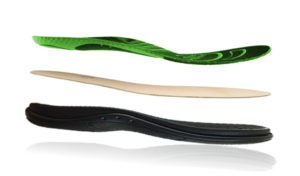How to repair shoe soles and resole shoes
 All shoes possess a bottom part which is in contact with the concrete floor called “sole.” Unfortunately, concrete floor acts as a sand paper! As we mostly walk on a concrete floor all day long, it is important for the sole of your shoe to be made with quality materials.
All shoes possess a bottom part which is in contact with the concrete floor called “sole.” Unfortunately, concrete floor acts as a sand paper! As we mostly walk on a concrete floor all day long, it is important for the sole of your shoe to be made with quality materials.
Types of shoe soles
Soles usually consist of an outsole, midsole and insole.
- The outsole can be made from leather, polyurethane or natural rubber. It is the part of the sole that is in direct contact with the concrete floor. A leather outsole is stylish, classy and dressy, but is a bit slippery, so most outsoles have a rubber heel for traction and durability.
- The midsole acts as a shock absorber and is located between the outsole and the insole. Some shoes does not have a midsole, while others manufactured for specific target groups possess additional features:
- Midsoles for sports shoes like “100m races” possess an additional shock absorber, underneath the heel of the foot.
- Work boots and safety shoes have often a midsole that is a penetration resistant plate. It protects the shoes from punctures from below. Such footwear is marked with several safety codes.
- The insole is the part of the shoe directly underneath the foot. It is usually removable and made from different materials like synthetic non woven board, gel and rubber, cellulosic paper board or cotton. It is attached to the lasting margin of the part of the shoe that sits on top of the foot called “the upper”.
Process of making shoe soles
Firstly, the outsole and the insole of the shoe is created by placing natural rubber into a mold and heating for a short time. The mold is taken out of the oven and the excess rubber is removed leaving a perfectly formed sole. The process is repeated again until the insole is also formed. The insole and outsole is then fused together using glue or any adhesive material to form a beautiful sole.
This process of making shoe sole also varies, depending on the kind of material you are using to make the sole and the type of shoe that the sole is been made for. The sole needed for running, ballet or volleyball shoes is different, but the basic elements and process of producing the soles is essentially the same.
How to repair shoe soles
Shoe soles may crack and wear out. It may be caused by a defect in the sole or an old age of a shoe. Anyway there are ways to repair the soles.
- Resole the shoe. This is a process of removing and replacing the old sole completely. It’s best to do it at a professional local cobbler, but it is also possible to resole the shoes at home:
- Buy a rubber replacement sole and heel tips. The half-soles and heels are available at different sizes and shapes. Make sure you buy the right size and form.
- Clean and dry the old soles. If the old ones are totally worn out or broken with holes than it’s better to cut the soles off completely.
- Coat the new soles with a leather contact cement. Cut the leather further on the shoe to ensure the right shape.
- Put the shoe under pressure or walk in them for several minutes to ensure that the new soles hold.
- When the soles sit tight trim off the rest of the rubber around the shoe with a sharp knife.
- Smooth the cut edges with a shoe rasp. Be careful as to not damage the upper leather.
- Install new heel tips if you had ones.
- Try rubber repair kit if your have puncture damage on rubber or plastic soles.
- Apply Shoegoo Adhesive or liquid rubber paste. It’s a good remedy for extending the life of a shoe and glue soles that are separating from the upper or at the toe. It is strong and dries quickly, but let it dry for 24 hour for better result.
Many people wonder what glue are best for shoes: shoe goo vs gorilla glue. The answer is that these two glues work better together. Both glues work on dry rubber, but while Gorilla glue makes a rigid glue mark, a shoe glue makes a flexible one. Thus shoe goo is better for gluing flip flops where Gorilla glue will make it too brittle. Also using a shoe glue is better on flexible shoes like toddlers shoes as they often need flexible seals. Gorilla glue on the other hand is a more professional product and holds the stuff really strong so it’s best for bonds and other small parts of a shoe.